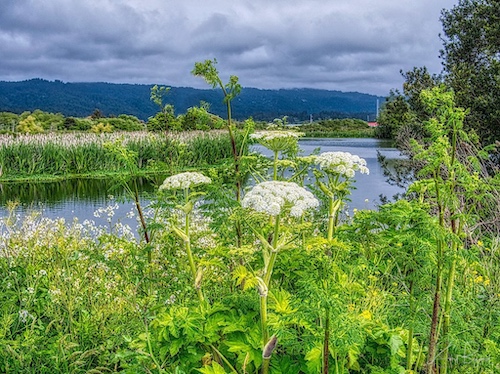
This past spring I visited Arcata California for a little bird photography. Whenever I am out photographing birds, I always take a second camera with a macro lens attached for photographing wildflowers and plants. Some days I get more pictures of birds while other days are predominantly flowers. Because of the cloudy Pacific Northwest climate, there are many interesting plants and beautiful flowers to be seen in the area. Also because of the climate there are many fewer people that both live here and visit, compared to the areas south, making it a good place to see wildflowers and birds. Again because of the climate, there are a fair number of unusual local plants and wildflowers that can be seen nowhere else. There are also a large number of non-native plants that while beautiful, affect the delicate balance of nature in this area. These “immigrant plants” should be a reminder that introducing non-native elements into an ecosystem can have unintended consequences. In any case, I came away with some photos of beautiful blossoms which I thought I would share.
Red Elderberry
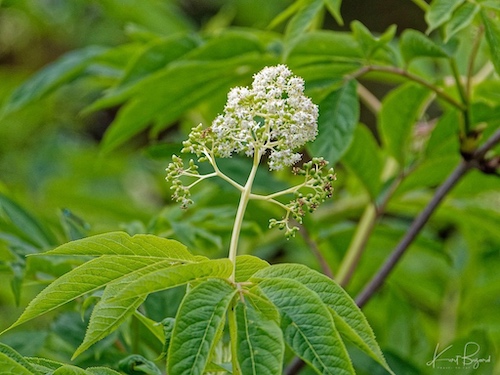
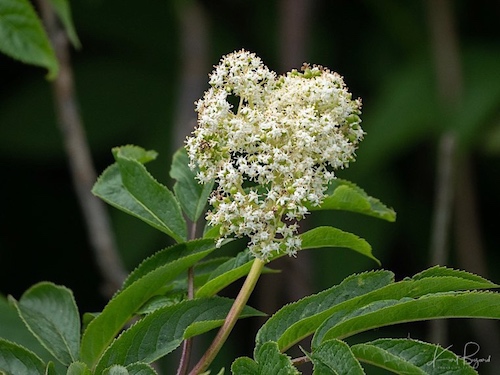
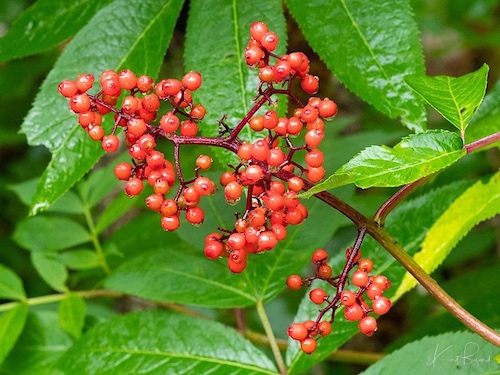
Red Elderberry or Red-Berried Elder is native to Europe, northern temperate Asia, and North America across Canada and the United States. It grows in riparian environments, woodlands, and other habitats, generally in moist areas. Each flower has small, recurved petals and a star-shaped axis of five white stamens tipped in yellow anthers. The flowers are fragrant and visited by hummingbirds and butterflies. The raw berries are slightly poisonous but they can be cooked and made into edible wine and jam. I happened to have picture of the berries from my cruise to Alaska last year.
California or Pacific Blackberry
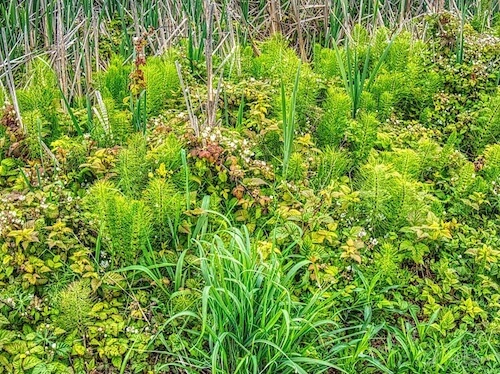
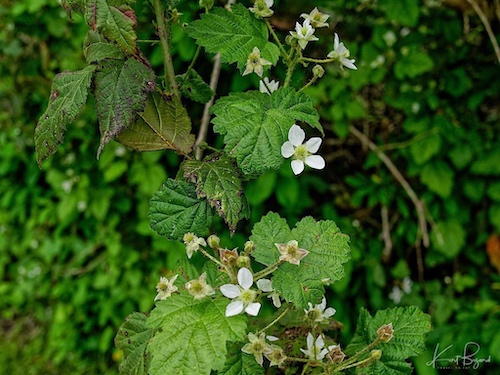
Rubus ursinus is a North American species of blackberry or dewberry, known by the common names California blackberry, California dewberry, Douglas berry, Pacific blackberry, Pacific dewberry and trailing blackberry. The name is from rubus for “bramble” and ursinus for “bear.” The plant is native to western North America including British Columbia and Baja California. These berries are definitely edible if you find them before the bears, birds and deer.
Thimbleberry
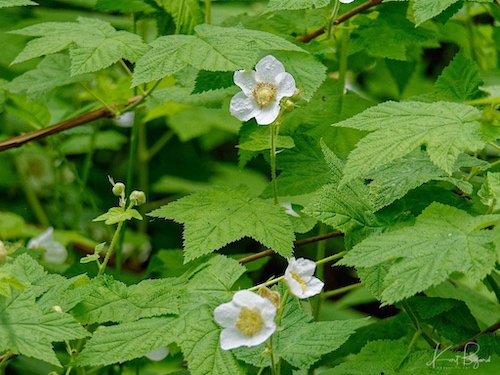
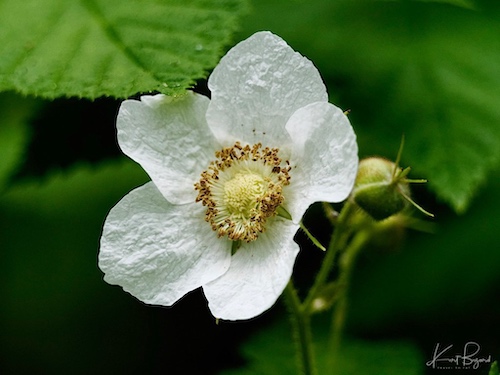
Rubus parviflorus, commonly called thimbleberry, is native to western North America from Alaska south as far as California, New Mexico, Chihuahua, and San Luis Potosí. typically grows along roadsides, railroad tracks, and in forest clearings, commonly appearing as an early part of the ecological succession in clear cut and forest fire areas.
English Plantain
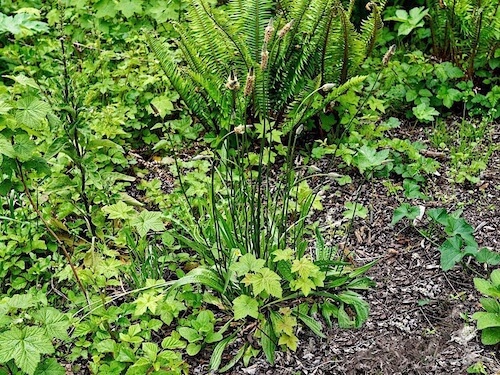
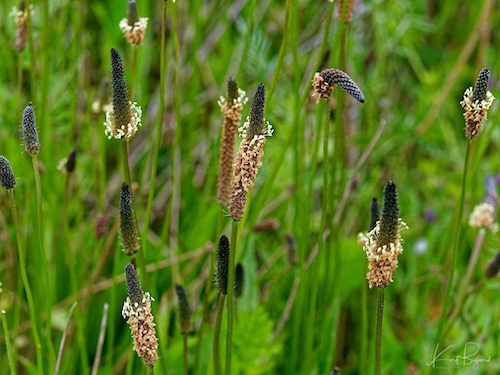
Plantago lanceolata is known by the common names ribwort plantain, narrowleaf plantain, English plantain, ribleaf and lamb’s tongue. It is a common weed of cultivated land. It is native to temperate Eurasia, widespread throughout the British Isles, but scarce on the most acidic soils. It is present and widespread in the Americas and Australia as an introduced species.
Wild Garlic
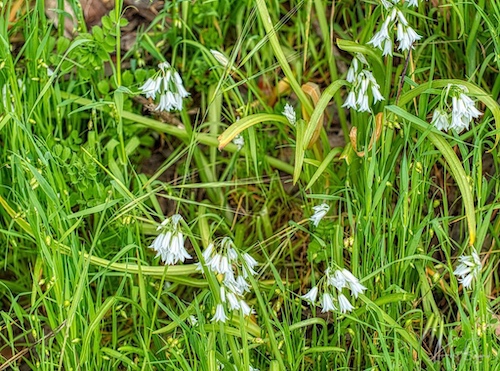
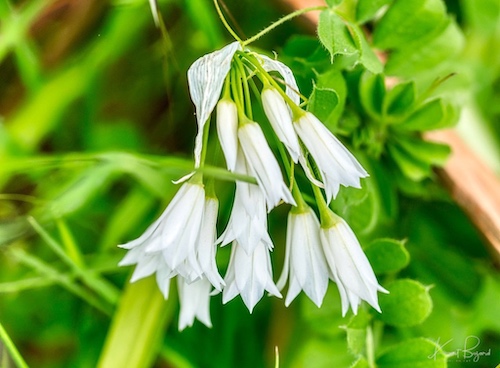
Allium triquetrum is known in English as three-cornered leek, and in Australia and New Zealand as onion weed. Both the English name and the specific epithet triquetrum refer to the three-cornered shape of the flower stalks. It is native to south-western Europe, north-western Africa, Madeira and the Canary Islands, where it grows in meadows, woodland clearings, on river banks and roadsides.
Lawn Daisy or English Daisy
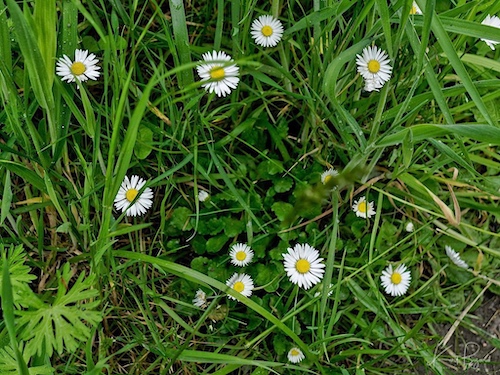
Lawn daisy is native to western, central and northern Europe, but widely naturalised in most temperate regions including the Americas and Australasia. Young leaves can be eaten raw in salads or cooked, noting that the leaves become increasingly astringent with age. Flower buds and petals can be eaten raw in sandwiches, soups and salads. It is also used as a tea and as a vitamin supplement.
Creeping Buttercup
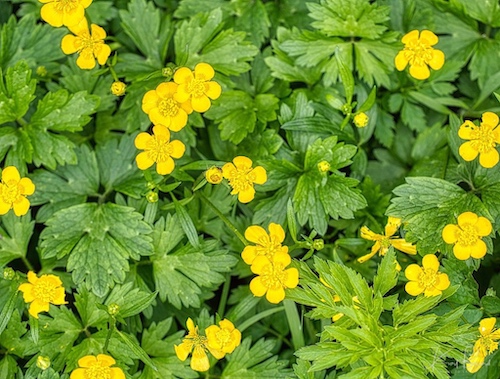
Creeping buttercup was sold in many parts of the world as an ornamental plant, and has now become an invasive species in many parts of the world. It is a very common weed of agricultural land and gardens, spreading quickly by its roots and resisting removal with a deeply anchored filamentous root ball. Like most buttercups, Ranunculus repens is poisonous, although when dried with hay these poisons are lost. The taste of buttercups is bitter, so cattle avoid eating them.
Wild Mustard or Charlock
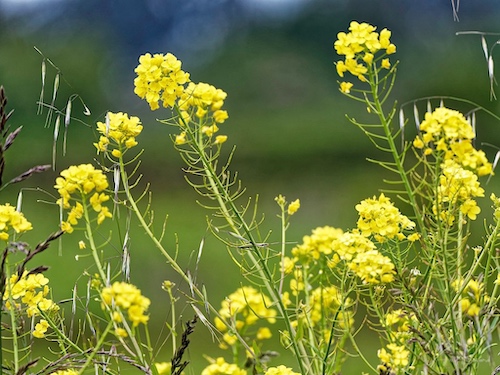
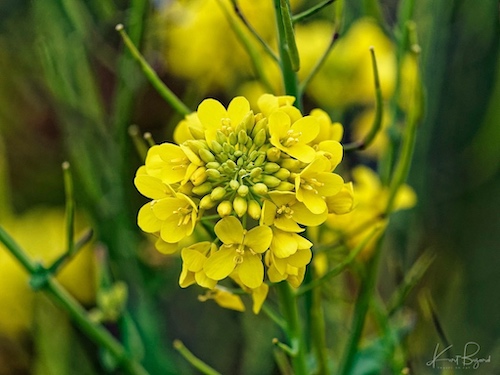
Sinapis arvensis, the charlock mustard, field mustard, wild mustard or charlock, is native to the fields of North Africa, Asia and Europe. It has also become naturalised throughout much of North America, South America, Australia, Japan and South Africa. The leaves of wild mustard are edible at the juvenile stage of the plant, they are usually boiled, such as in 18th century, in Dublin, where it was sold in the streets during the potato famine.
Bird’s Foot Trefoil
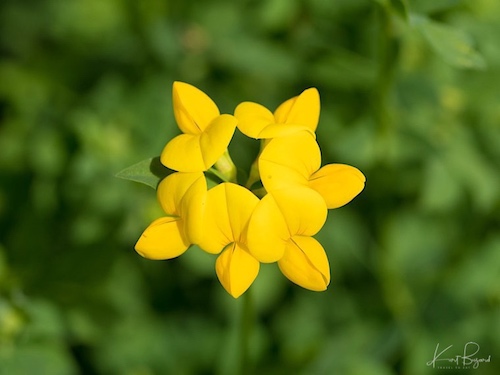
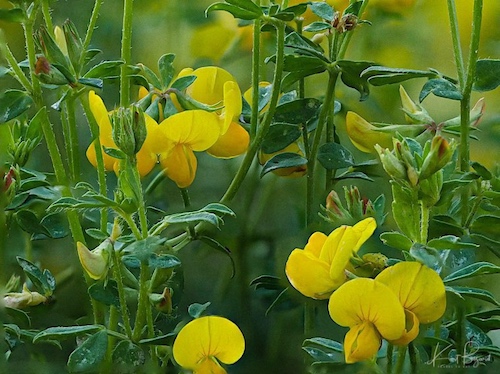
Lotus corniculatus is native to grasslands in temperate Eurasia and North Africa. Common names include common bird’s-foot trefoil, eggs and bacon, birdsfoot deervetch, and just bird’s-foot trefoil. Lotus corniculatus has a broad distribution worldwide. It is an invasive species in many parts of North America and Australia. Habitats include old fields, grassy places and roadsides.
California Bee Plant
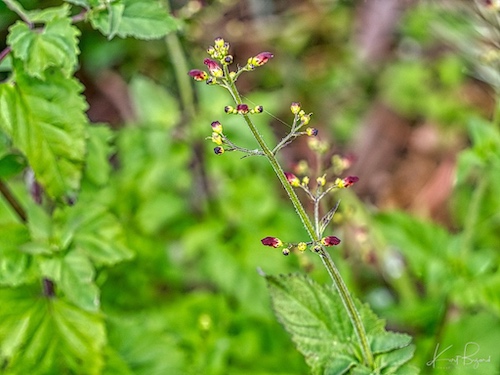
California Figwort or California Bee Plant is a perennial herb is native to the western United States and British Columbia. This is a plant with triangular, toothed, blue-green leaves in pairs opposite each other on a spindly, squared stem. The brownish-magenta flowers are rounded, hollow buds about a centimeter long with two long upper lobes. This species is a strongly attracts bees, as noted in the name.
Blueblossom or California Lilac
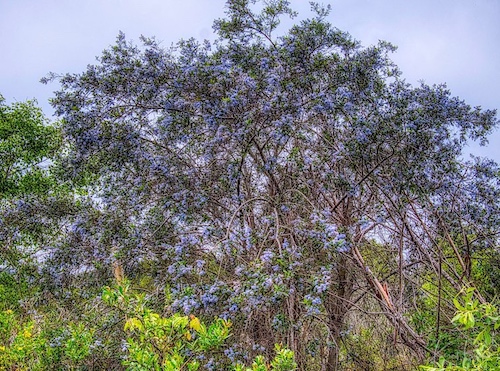
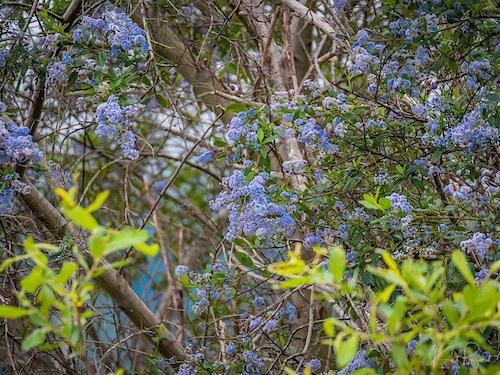
Blueblossom or Blue Blossom Ceanothus, native to California, is one of the most popular species of Ceanothus in landscaping applications. It varies dramatically in form and size over its natural range, with some plants growing fairly upright to 30 feet and others growing in a mounding form to only 2–3 feet tall. Blueblossom Ceanothus is evergreen, with leaves range from bright green to dark green. It has small flowers that are produced in a dense, puff-shaped clusters, that are white, light blue, dark blue or purple. They bloom in the winter or spring, and then mature into a dry, three-lobed seed capsule. Its flowers are important for bees and butterflies, and its seed pods are an important food source for birds and small mammals.
Wild Radish
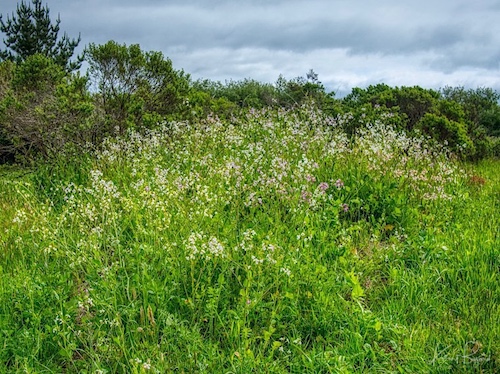
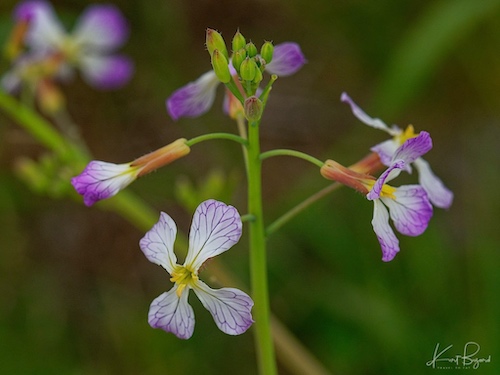
Wild Radish, jointed charlock, jointed radish, jointed wild radish, sea radish or white charlock, is native to western Asia, Europe and parts of Northern Africa. It has been introduced into most parts of the world and is regarded as a habitat threatening invasive species. It is sometimes claimed to be the ancestor of the edible radish, Raphanus sativus. Wild radish is entirely edible. It grows to one meter tall and has dark green, deeply lobed leaves. They are peppery and earthy, much like those of the common cultivated radish. The root of Wild radish is white, long and slender and has a tough outer core that must be peeled. It has a dense texture and mild flavor like that of kohlrabi.
Everlasting Pea
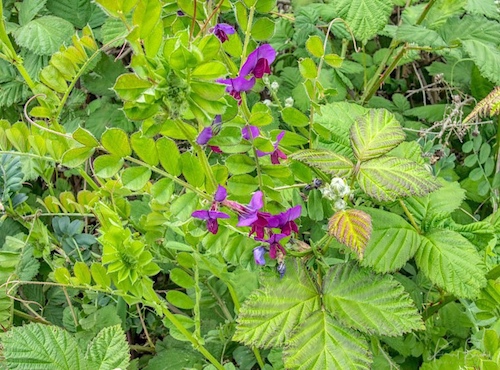
Everlasting Pea, the perennial peavine, perennial pea or broad-leaved everlasting-pea, is native to Europe but is present on other continents, such as North America and Australia, where it is most often seen along roadsides. Bumblebees and butterflies visit the flowers for their nectar. The seeds are poisonous.
Riverbank Lupine
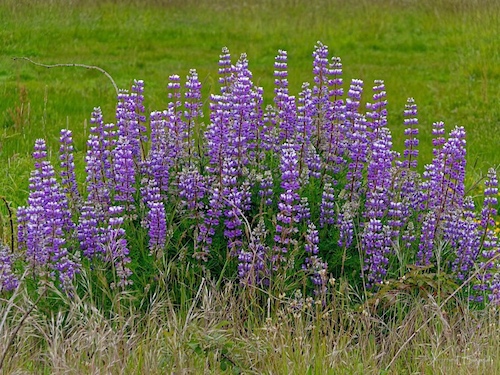
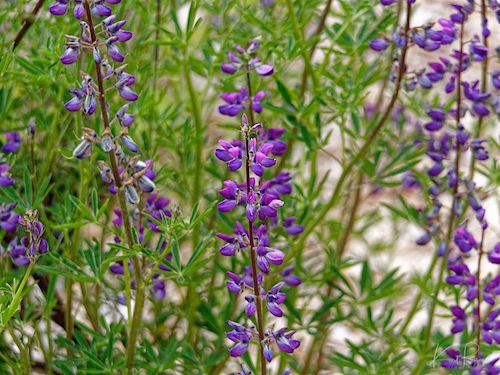
Riverbank Lupine is native to western North America from southern British Columbia to Northern California. The flower is light purple in color, often with white parts or shading. It typically occurs on gravel outwashes and sandbars or disturbed areas.
Humboldt Bay Owl’s-Clover
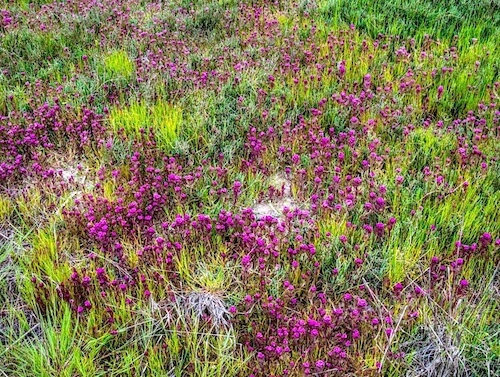
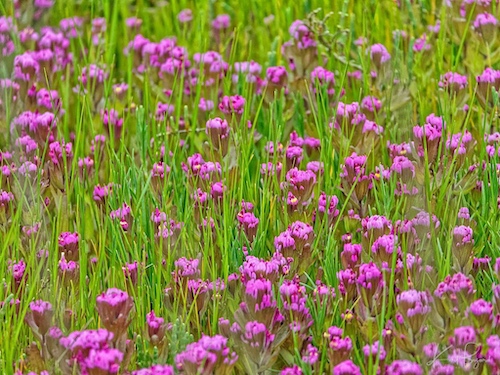
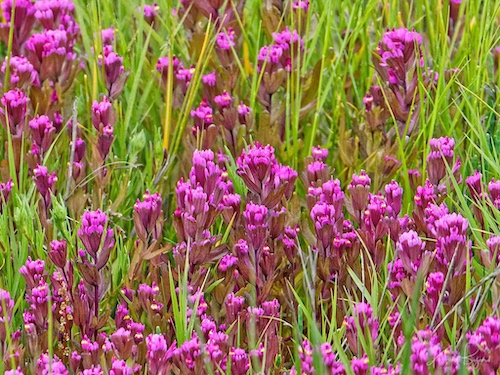
Humboldt Bay’s salt marsh is home to many fascinating plants, including the rare Humboldt Bay Owl’s Clover and Point Reyes Bird’s Beak (Cordylanthus maritmus ssp. palustris). Humboldt Bay Owl’s-Clover is found in tidal marsh locations and was originally thought to be endemic to Humboldt Bay, hence its common name. But it’s been found in Mendocino County at Big River and at the Point Arena-Stornetta Lands.
Sand Dunes
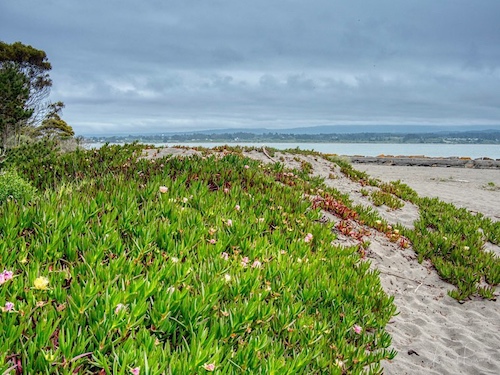
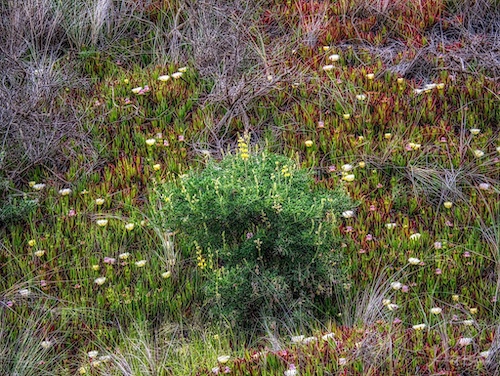
Located on California’s rugged North Coast, roughly 250 miles north of the Golden Gate Bridge, Humboldt Bay is California’s second largest natural estuary. Humboldt Bay’s four major watersheds drain approximately 250 square miles. Along the Bay’s wind-swept coast lies an extraordinary dune ecosystem. Many of the features of Humboldt Bay sand dunes have been stabilized by non-native European beachgrass, iceplant, and yellow bush lupine, all of which were intentionally planted for dune stabilization.
Hottentot Fig or Ice Plant
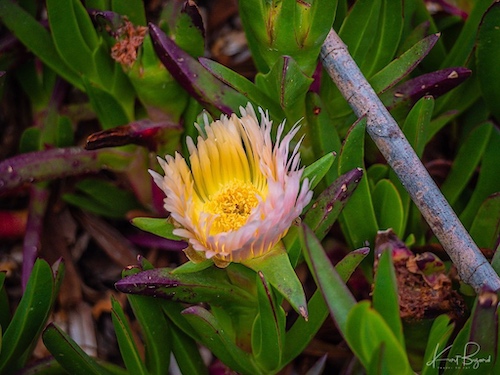
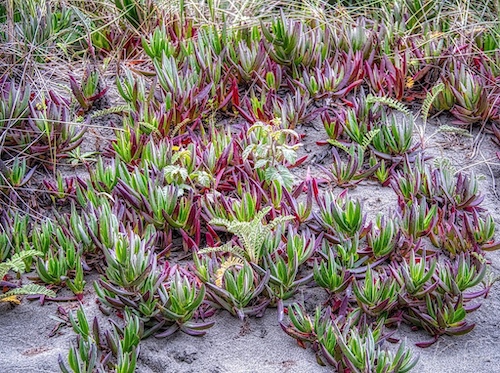
Although the ice plant may have arrived by ship as early as the 16th century, it was actively introduced in the early 1900s to stabilize dunes and soil along railroad tracks; it was later put to use by Caltrans for ground cover along freeway embankments. Thousands of acres were planted in California until the 1970s. It easily spreads by seed (hundreds per fruit) and from segmentation (any shoot segment can produce roots). Its succulent foliage, bright magenta or yellow flowers, and resistance to some harsh coastal climatic conditions (salt) have also made it a favored garden plant. Despite its use as a soil stabilizer, it actually exacerbates and speeds up coastal erosion. It holds great masses of water in its leaves, and its roots are very shallow. In California, the ice plant is found in coastal habitats from north of Eureka, south at least as far as Rosarito in Baja California.
Yellow Bush Lupine
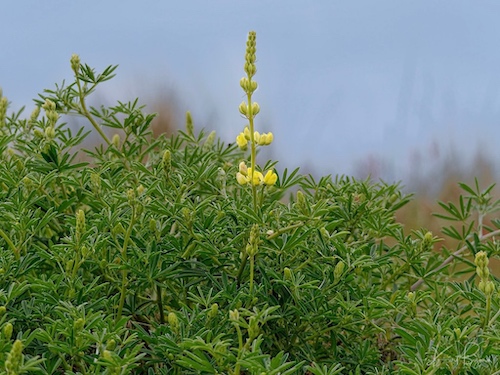
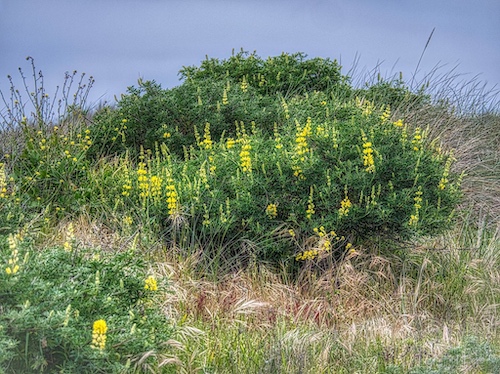
Yellow Bush Lupine is indigenous to California, where it is widely distributed among coastal sage scrub and sand dunes. Because it has been widely introduced in the state, there is some uncertainty about its native range. It is thought to be native from Point Reyes National Seashore south to San Luis Obispo County. An invader of coastal dunes, this plant overwhelms diverse native dune flowers and enriches the soil, paving the way for invasive annual grasses. It is easily identified as the shrub in the dunes with the many bright yellow spikes of flowers.
Pampas Grass
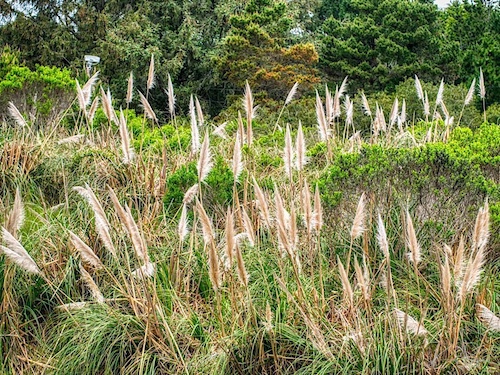
Pampas Grass is a flowering plant native to southern South America, including the Pampas region after which it is named. Present throughout Humboldt County, Pampas Grass alters native shrub, grass and post-logging forest lands by excluding native plants. It is easily identified by its tall, feather-like seed stalks. Difficult to pull once large, plants are better removed when small.
Sage Leaf Rock Rose
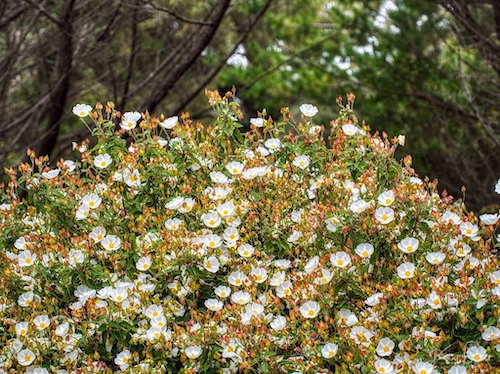
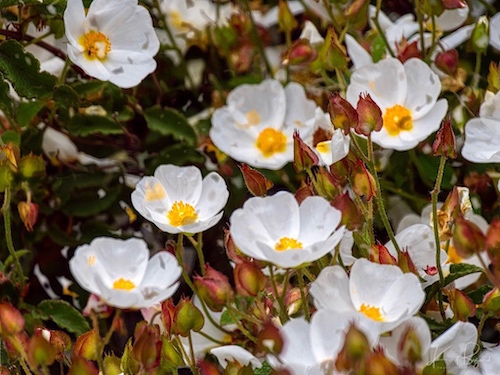
This showy wildflower is native to the Mediterranean region, in southern Europe and parts of Western Asia and North Africa. It has become naturalized in California.
Scotch Broom
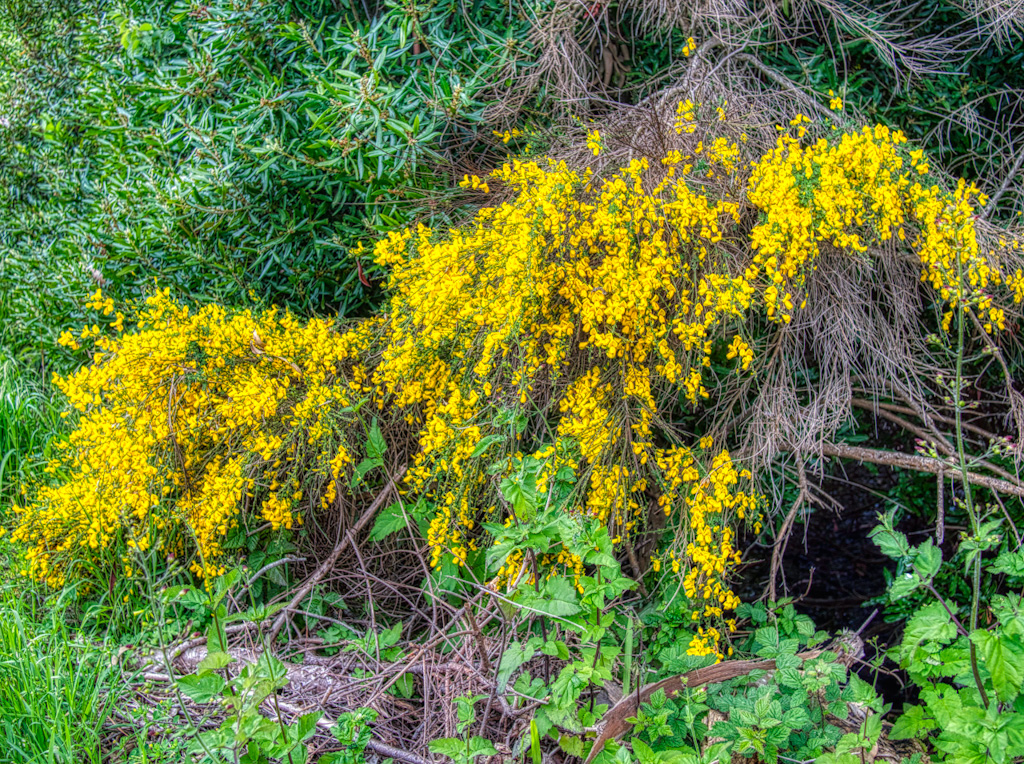
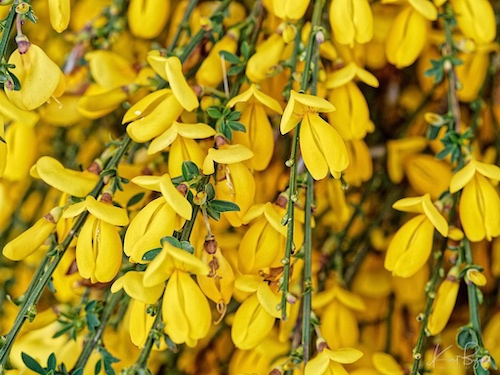
Scotch Broom is native to western and central Europe. With many roadside and grassland populations scattered throughout Humboldt County, brooms threaten to rapidly convert productive grasslands to unproductive shrub stands. Brooms are easily identified as yellow-flowered shrubs with small or no leaves.
Upland Areas
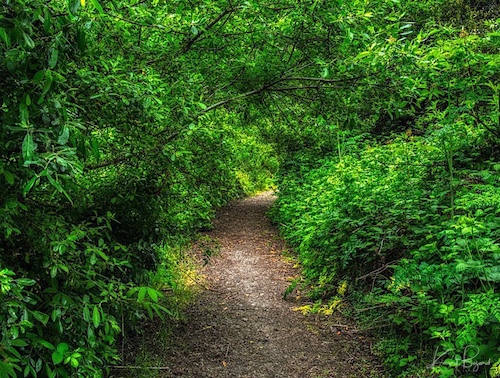
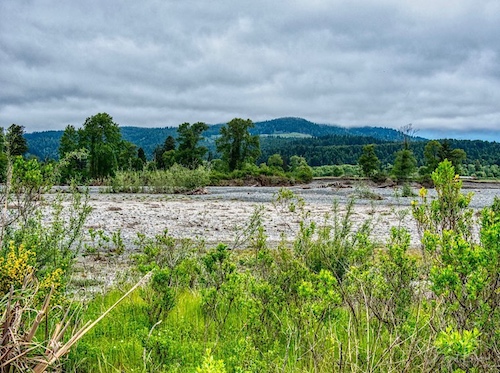
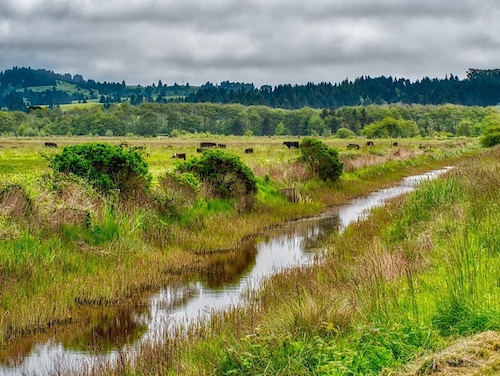
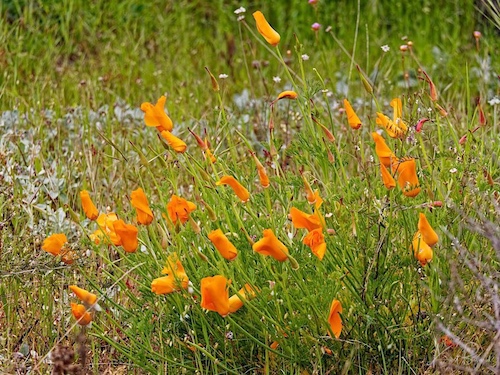
The area around Arcata is largely rural with many pastures and open areas perfect for birdwatching and scouting for wildflowers. The area near the Mad River Hatchery by Blue Lake is a combination of old-growth Coast Redwoods, densely filled secondary forested areas and open scrubby areas. I found many of the wild flowers shown above in this area.
As always I hope you enjoyed the post and will return in the future.
References:
Wild Blackberries can be Tamed and Enjoyed
Cultivating Thimbleberries in the Homestead Garden

